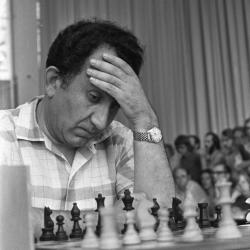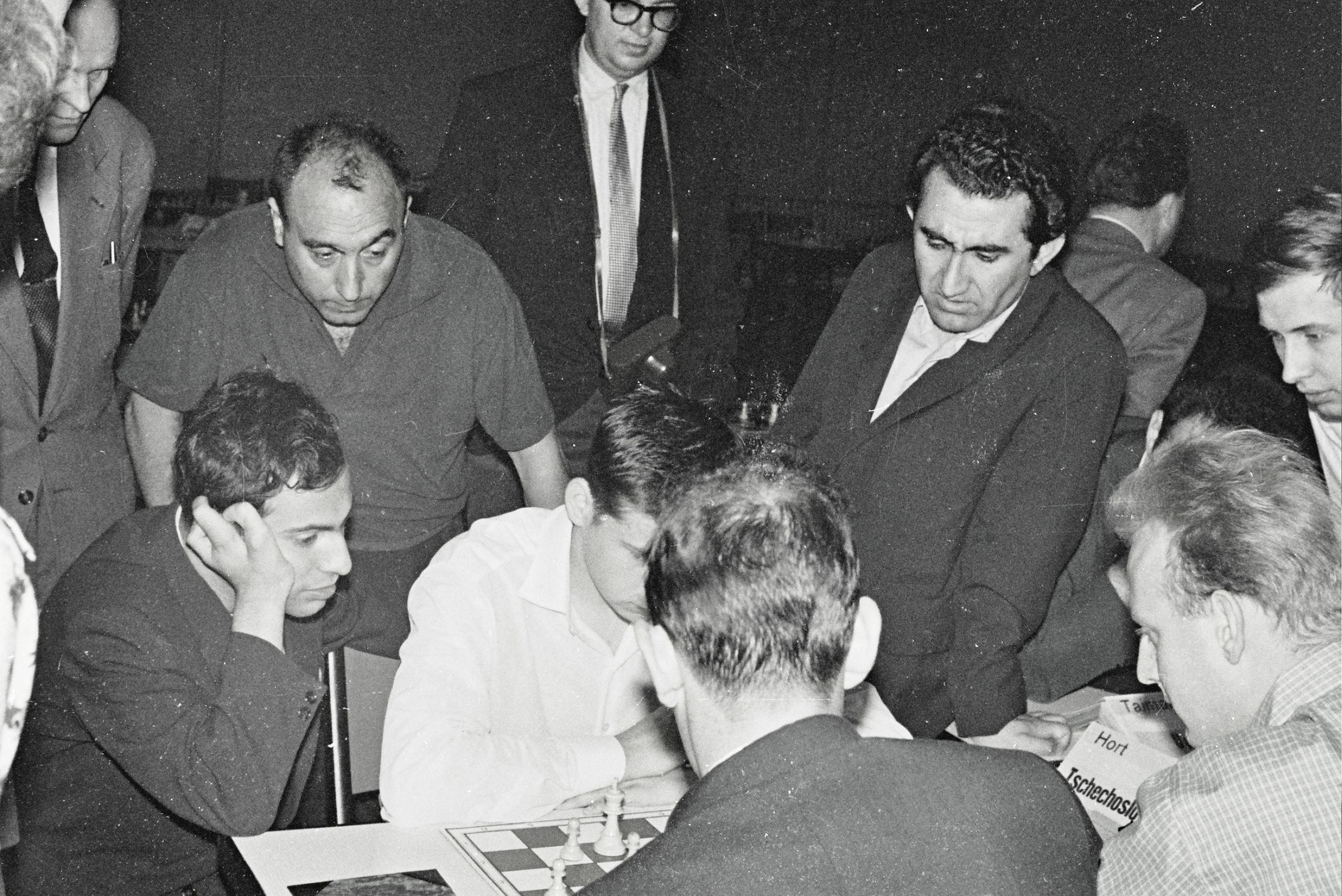GM Tigran Petrosian

Bio
Tigran Petrosian was the ninth world chess champion (1963-1969). He won the Soviet Championships four times (1959, 1961, 1969, and 1975), and was a member of the Soviet Olympiad team 10 times (between 1958-1978). He was known as "Iron Tigran", because of his seemingly impenetrable defensive prowess—he did not lose a single tournament game in 1962. He focused on safety and prophylactic play, and would happily wait for his chance to pounce at any mistake.
Petrosian was also known for his iron logic and clear vision, which enabled him to create very solid and harmonious positions that were rich in possibilities. It was in these types of positions where he would often employ his signature positional exchange sacrifice. Here is a classic example of a double exchange sacrifice:
Petrosian learned to play chess at the age of eight. After some very difficult years during and after World War II, he began to develop as a chess player. The famous book My System by Aaron Nimzowitsch had a deep impact on Petrosian. By using Nimzowitsch's ideas about prophylaxis and other positional rules, he began to blossom. Petrosian started employing solid positional openings and closed defensive structures. In 1946 he became a Candidate Master, in 1951 an International Master and in 1953 a Grandmaster.

1962 was a career-defining year for Petrosian. Not only did he finish the year undefeated in tournament play, but his performance at the 1962 Stockholm Interzonal gave him a chance to play in the Candidates tournament. Petrosian won the 1962 Candidates tournament (ahead of Mikhail Tal, Viktor Korchnoi, Bobby Fischer, and more chess legends), which gave him the right to challenge World Champion Mikhail Botvinnik the next year for the title. He prepared for this match by skiing every day, as he felt that this physical exercise would help his stamina in the long match to come. In 1963, Petrosian soundly defeated Botvinnik to become the ninth world chess champion.
Petrosian was an active world champion, and he continued his chess success at the top. In 1966, Petrosian defended his title against the challenger for the crown, Boris Spassky. Here is another classic example of Petrosian's positional exchange sacrifice, which was played in the 1966 World Championship match. In this game, Petrosian defeats Spassky by giving up the exchange for a crushing kingside attack:
In 1969, Petrosian played Spassky for the world championship again. In this match, Spassky was able to dethrone Petrosian. After losing the world championship title, Petrosian remained active in chess. He had many impressive tournament victories in the 1970s, and even through the very early 1980s, including his memorable escape versus a young Garry Kasparov at Tilburg in 1981.

Petrosian is considered a national hero in Armenia, and is seen as the spark for the big chess boom in that country (very similar to Fischer bringing chess to the public in the United States in the early 1970s, and even how current World Champion Magnus Carlsen has brought chess to the forefront in Norway). Petrosian is so beloved in Armenia, that they placed an image of him on their national currency. In 1987, former World Champion Garry Kasparov unveiled a memorial at Petrosian's grave in Moscow. In 2006, a statue of Petrosian was built near the Yerevan Pioneer Chess House in remembrance of the chess legend.



